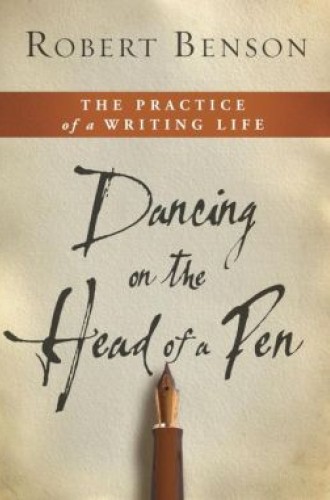Dancing on the Head of a Pen, by Robert Benson
A pastor who has a story to tell about the renewal of her congregation wrote to me recently, “I know there is a book in me. I feel deeply called to write. I also feel totally overwhelmed when writing.”
I know how she feels. When I wanted to write my story about spiritual direction, I too felt overwhelmed. I’d been reading Robert Benson’s short memoirs for a few years and loving the way he tells stories from his own life to illumine the life of prayer. That was what I wanted to do. So I wrote on a Post-it note, “You Can Do This,” stuck the note on Benson’s memoir Digging In, and placed it on the desk where I write.
With the publication of Dancing on the Head of a Pen, Benson has become more than an inspiration; he is a guide to people like my pastor friend who don’t know how to get from the blank page to a pile of pages called a book. “After some forty years and twenty books, I have learned I do not know a lot about a lot of things, but I do know how to write a book.” Here he shares what he knows.
Read our latest issue or browse back issues.
Benson begins with advice that reminds me of Abbot John Chapman’s line about prayer: Pray as you can, not as you can’t. Benson would say: Write as you can, not as you can’t. He shares the shape of his writing life with humility, knowing what has worked for him and that if others try some of what he suggests, it might help them learn what will work for them.
He tells the whole story of writing a book, from generating an idea, to identifying an audience, to the perils of gabbing about a work in progress. I don’t imagine many people will adopt his method. Who else would write a first draft longhand, type it into a computer, print it out, delete the computer file, paste the pages into a journal to revise, and then retype the whole thing? But his idiosyncrasies will help readers imagine their own possibilities.
More useful is Benson’s encouragement to write every day. A writer who is suffering from what Benson calls a “writer’s pause” shouldn’t go to the study thinking, “I have to write a book today!” That’s impossible. It is only necessary to write some sentences on a page. What Douglas Steere said about praying, Benson would apply to writing: the only fatal failure is to stop.
Benson shatters the illusion that being a writer is anything but hard work, noting that “writing a book more closely resembles digging a ditch than participating in some transcendent creative experience.” I suspect that his emphasis on fidelity to the mundane tasks of writing comes from the influence of Benedictine spirituality, as is so evident in his other books. The spiritual life is not about transcendent experience, either. It’s about showing up for prayer, about faithfulness to the routines. As with prayer, so with writing.
The image I found most helpful is one I wish Benson had unpacked further. In his studio he has three hats—a beret, a baseball cap, and a fedora, each one symbolizing a different aspect of the writer’s life. When he wears the beret, he’s in the creative phase. When he wears the baseball cap, he’s a ruthless editor. When he wears the fedora, he is attending to the business of publishing—drafting proposals, contacting agents, returning contracts. Keeping these three roles distinct is crucial, he says.
I wish he had said more about wearing the fedora. I know the book is about writing a book, not getting one published, but Benson says on the first page that “more and more the writer must not only make the art but deliver the audience as well.” He’s talking about what the publishing industry calls platform—a writer’s ability to deliver an audience. And I’m curious how Benson pulls it off, because today fedora-wearing writers have more to do than he lets on. They have to blog, accumulate Facebook friends, and promote themselves online. I checked Benson’s website, and it was last updated more than a year ago. So how does the fedora-wearing Benson deal with this newer aspect of the writer’s life?
Benson suggests that writers should have a special shelf on which they keep the few books that teach and inspire them the most. I have one of those shelves, and on it Dancing on the Head of a Pen will take its place next to Annie Dillard’s The Writing Life, Anne Lamott’s Bird by Bird, and Strunk and White’s Elements of Style. Not because it does what those other books do, but because in it Benson does so well what he sets out to do: pull back the curtain on one writer’s craft and leave the reader saying, “I can do that.”






